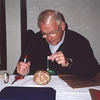This is an image of the type-B aurora of Earth, also called the SAR ARC.
L. Frank from Dynamics Explorer
Neptune Aurora
Aurora has been seen in the atmosphere of Neptune which is centered around the magnetic pole, as it should be for type-A aurora, even so Neptune mostly has type-B aurora similar to the SAR ARC of Earth (shown here).
The rings of Neptune extend to 2.5 Rn, exactly where the plasmasphere is supposed to be, and sweep away much of the material there. Therefore there is only a small plasmasphere containing trapped particles, so there is a lot less plasma to create the aurora.
No radio signals from Neptune have been detected which relate to aurora or auroral processes, and scientists are still working to understand the currents which cause aurora.
Thus, from what little we know about the magnetosphere, much of the aurora of Neptune is thought to be created from the diffuse precipitation of particles into the atmosphere, very much like the formation of the terrestrial SAR ARC. These aurora are beautiful but much less dynamic than the type-A aurora found at the poles of the Earth or Jupiter.
You might also be interested in:
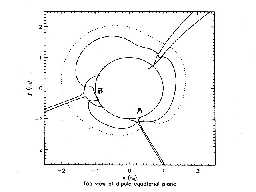
Neptune has three tiny plasmaspheres. The rings of Neptune sweep away much of the particles in the area. Particles enter the plasmasphere from the atmosphere as well as the magnetotail. Mathematical theory
...more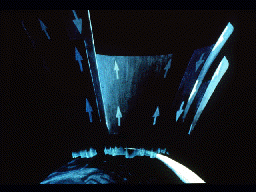
This picture illustrates the streaming of particles into and out of the auroral zone, as Field-aligned currents (FAC's) short-circuit through the ionosphere. Some of the particles entering the auroral
...more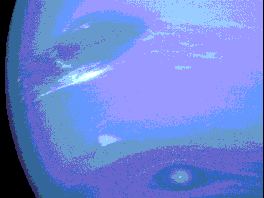
One of the many cloud patterns of Neptune is the "scooter" which was discovered by Voyager in 1989. In this image, the Great Dark Spot is found in the upper left of the image, and just below the Spot is
...more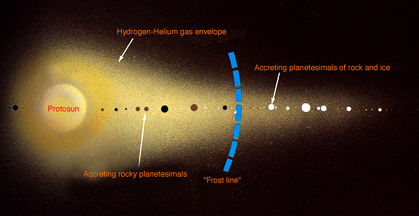
The position of the planets in the solar nebula greatly affected their 1. size and 2. composition. This is because of the effect of how cold it was in the nebula. 1. The nebula was a lot warmer close to
...more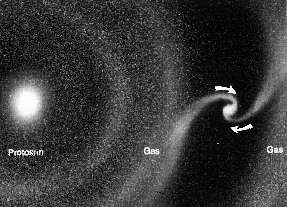
As shown in this picture, while they were forming in the solar nebula, the nuclei of the protoplanets drew material to themselves from the cloud of gas and dust around them. The bigger a protoplanets was
...more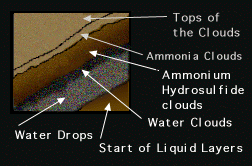
There is no surface to the giant planets, only a gradual transition from the atmosphere, as depicted in this drawing. Therefore the giant planets do not have strict layers, as the terrestrial planets do.
...more
Triton, by far the largest moon of Neptune, is slightly smaller than Earth's Moon. Triton has the coldest surface temperatures in our Solar System. Surprisingly, this frigid moon has an atmosphere, albeit
...more



